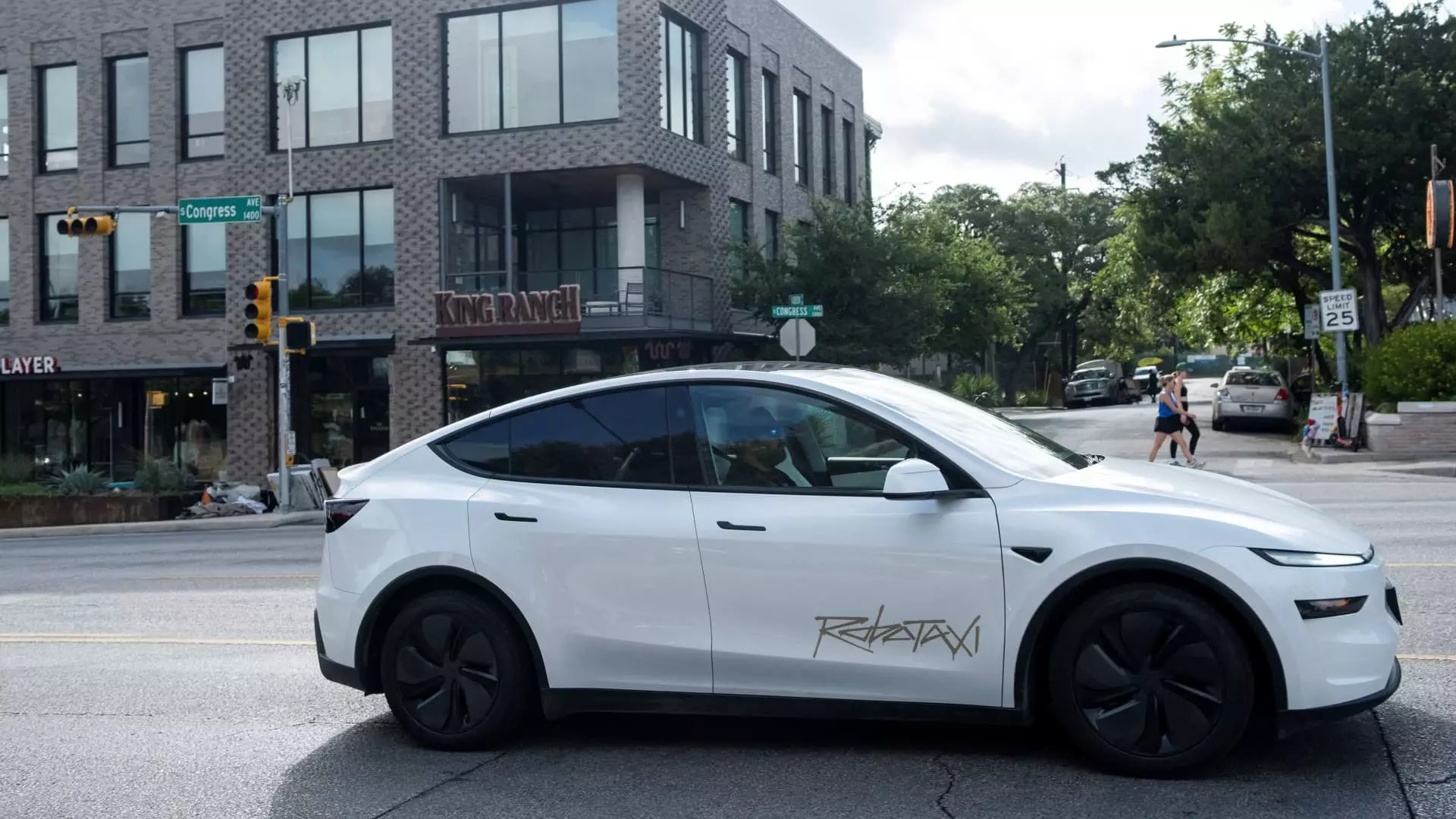In recent years, the automotive industry has witnessed a groundbreaking push towards automation, with companies like Tesla spearheading the charge into fully autonomous vehicles. Elon Musk has consistently positioned Tesla as a pioneer in this transformational wave, promising to redefine personal mobility through technology. This ambition seems laudable. However, the recent rollout of Tesla’s robotaxi service in Austin—one that was marred by concerning incidents—has raised critical questions about the reality of this technology and the regulations that govern it.
The robotaxi service kicked off with fanfare, only for the spectacle to be tainted by videos surfacing online that depict the vehicles navigating in erratic manners. Observing a vehicle traveling the wrong way or braking suddenly in heavy traffic isn’t just a glitch; it is a serious safety concern. These incidents pose an uncomfortable dilemma: at what point does innovation morph into irresponsibility?
Regulatory Oversight and Safety Standards
The National Highway Traffic Safety Administration (NHTSA) has taken an active interest following these alarming incidents, emphasizing that they are in contact with Tesla. However, the NHTSA doesn’t pre-approve new technologies before they hit public roads, relying instead on manufacturers to ensure their products meet federal safety standards. While the idea of self-regulation is common in tech circles, when it comes to autonomous vehicles, one might question whether such a model is enough to protect public safety.
The phrase “gather additional information” is often used as a polite way of saying, “We’ll see.” The agency has a duty to investigate potential safety defects, but the ongoing nature of previous investigations into Tesla’s Full Self-Driving (FSD) technology casts a shadow on their efficacy. With multiple accidents involving Tesla’s technology already under scrutiny, this current situation evokes skepticism over how quickly, and effectively, regulatory bodies can react to a rapidly evolving industry.
Future Versus Reality: The Failed Promises
Tesla’s marketing narrative has long promised to deliver a world where vehicles drive themselves seamlessly. In earlier statements, Musk projected timelines for arriving at full autonomy that have since come and gone—each passing year bringing disappointment instead of innovation. The ambitious language he used led many investors to believe that a fleet of fully operational robotaxis would soon dominate the streets. Yet, in the face of reality, we’re left with a beta service that operates under strict visibility constraints and with human supervision.
While Tesla’s robotaxi venture recently generated an 8% increase in stock value, investors need to approach this growth with a critical mindset. Much of this enthusiasm appears to stem from an echo chamber of Tesla advocates rather than tangible results. By comparison, competitors like Waymo have amassed over 10 million paid trips, establishing a benchmark that underscores Tesla’s struggle to keep up.
The Competition Heats Up
The global landscape for autonomous vehicles is becoming intensely competitive. Major players, including Alphabet’s Waymo and various Chinese companies like Baidu’s Apollo Go, are outpacing Tesla. They represent not just alternatives in technology but also exemplify a different approach to safety and public adoption. With established safety metrics and operational successes, these competitors are reshaping consumer expectations.
Tesla’s current predicament serves as a cautionary tale on the hubris often associated with tech entrepreneurship. Rapid advancement shouldn’t come at the cost of adherence to rigorous safety protocols. To maintain leadership in this space, Tesla must pivot from its culture of bold audacity to one that prioritizes and integrates safety and practicality into its innovations.
It is crucial for both the company and regulators to foster a dialogue that balances innovation with public safety, ensuring that the dream of autonomous driving does not devolve into a nightmare for everyday users on the streets.


Leave a Reply